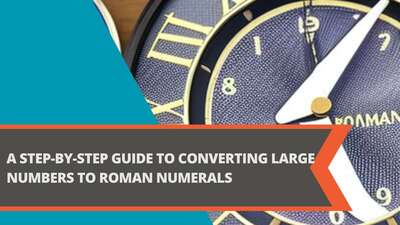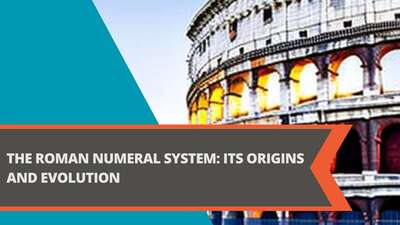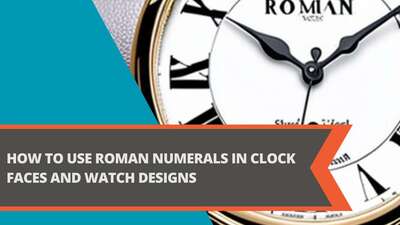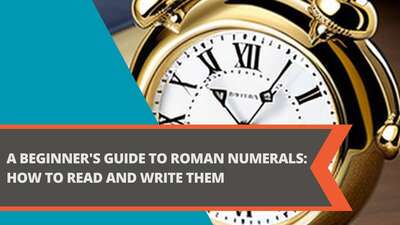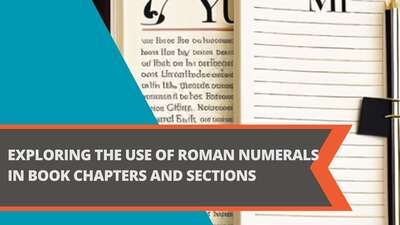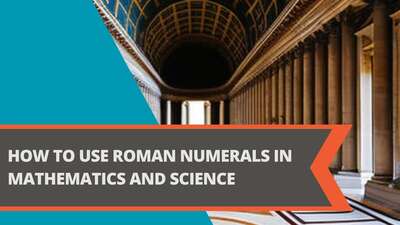How to Use Roman Numeral Worksheet to Improve Your Math Skills
- Definition of Roman Numerals
- The Formula for Converting Roman Numerals to Arabic Numerals
- Examples of Roman Numeral Worksheet Exercises
- Explanation of Roman Numeral Worksheet Exercises
- Question and Answer FAQ
- What is the history of Roman numerals?
- Why are Roman numerals still used today?
- How can a Roman numeral worksheet help me improve my math skills?
- Where can I find a Roman Numeral Worksheet to practice?
- What are some tips for learning Roman numerals?
- Conclusion
Are you struggling with understanding Roman numerals? Do you want to learn how to convert numbers from Roman numerals to Arabic numerals and vice versa? Then a Roman numeral worksheet can help you improve your math skills and master the art of Roman numerals.
Definition of Roman Numerals
Roman numerals are a system of numerical notation used in ancient Rome. The system uses a combination of letters from the Latin alphabet to represent numbers. The letters used are I, V, X, L, C, D, and M, which represent 1, 5, 10, 50, 100, 500, and 1,000, respectively.
The system is still used today, particularly in certain fields such as clock faces, book chapters, and movie credits. Understanding Roman numerals is a useful skill that can improve your math skills and help you appreciate the history of mathematics.
The Formula for Converting Roman Numerals to Arabic Numerals
Converting Roman numerals to Arabic numerals involves a formula that can be easily applied to any Roman numeral. The formula is:
- Start from left to right.
- If the letter on the left is smaller than the letter on the right, subtract the value of the letter on the left from the value of the letter on the right.
- If the letter on the left is greater than or equal to the letter on the right, add the value of the letter on the left to the total.
- Repeat until all the letters have been accounted for.
For example, let's convert the Roman numeral MCMLXXXIV to an Arabic numeral:
| Roman Numeral | Value |
|---|---|
| M | 1000 |
| C | 100 |
| M | 1000 |
| L | 50 |
| X | 10 |
| X | 10 |
| V | 5 |
| I | 1 |
| V | 5 |
| I | 1 |
| V | 5 |
| Total | 1984 |
Examples of Roman Numeral Worksheet Exercises
A Roman numeral worksheet typically includes exercises that involve converting Roman numerals to Arabic numerals and vice versa. Here are some examples of exercises you might find in a Roman numeral worksheet:
- Convert the following Roman numerals to Arabic numerals: XXVIII, LXIV, DCCXVIII
- Convert the following Arabic numerals to Roman numerals: 49, 73, 128
- Write the Roman numeral for the year 2022
- Write the Arabic numeral for the Roman numeral MMXVIII
These exercises can help you practice and master the formula for converting Roman numerals to Arabic numerals and vice versa.
Explanation of Roman Numeral Worksheet Exercises
The first exercise, converting XXVIII to an Arabic numeral, involves applying the formula from left to right:
- X is 10 and V is 5, so we subtract V from X to get 5.
- X is 10 and I is 1, so we add I to X to get 11.
- The final result is 28.
The second exercise, converting 49 to a Roman numeral, involves breaking the number down into its component parts:
- 40 is XL in Roman numerals.
- 9 is IX in Roman numerals.
- The final result is XLIX.
The third exercise, writing the Roman numeral for the year 2022, involves breaking the year down into its component parts:
- 2000 is MM in Roman numerals.
- 20 is XX in Roman numerals.
- 2 is II in Roman numerals.
- The final result is MMXXII.
The fourth exercise, writing the Arabic numeral for the Roman numeral MMXVIII, involves applying the formula from left to right:
- M is 1000 and M is 1000, so we add 1000 and 1000 to get 2000.
- X is 10 and V is 5, so we subtract V from X to get 5.
- I is 1 and I is 1, so we add 1 and 1 to get 2.
- I is 1 and I is 1, so we add 1 and 1 to get 2.
- The final result is 2018.
Question and Answer FAQ
What is the history of Roman numerals?
Roman numerals were used by the ancient Romans as a system of numerical notation. The system is believed to have originated in ancient Etruria and was later adopted by the Romans. Roman numerals were used for a variety of purposes, including counting, record-keeping, and time-telling.
Why are Roman numerals still used today?
Roman numerals are still used today in certain fields such as clock faces, book chapters, and movie credits. They are also used as a stylistic choice in logos, titles, and other design elements.
How can a Roman numeral worksheet help me improve my math skills?
A Roman numeral worksheet can help you practice and master the formula for converting Roman numerals to Arabic numerals and vice versa. This can improve your math skills by strengthening your understanding of mathematical concepts and formulas.
Where can I find a Roman Numeral Worksheet to practice?
You can find Roman numeral worksheets online by searching for them on search engines such as Google. There are many free resources available that offer Roman numeral exercises and worksheets. Additionally, you may be able to find Roman numeral worksheets at your local bookstore or school supply store.
What are some tips for learning Roman numerals?
Here are a few tips for learning Roman numerals:
- Start with the basics: Learn the Roman numerals for 1, 5, 10, 50, 100, 500, and 1000.
- Practice converting numbers: Start with small numbers and gradually work your way up to larger numbers.
- Use flashcards: Write the Arabic numeral on one side of the flashcard and the Roman numeral on the other side. Practice flipping through the flashcards and quizzing yourself.
- Watch videos: There are many instructional videos available online that can help you learn Roman numerals.
Conclusion
Learning Roman numerals can be a fun and rewarding experience. By mastering the formula for converting Roman numerals to Arabic numerals and vice versa, you can improve your math skills and gain a deeper understanding of mathematical concepts and formulas. Whether you're a student, teacher, or just someone who loves numbers, a Roman numeral worksheet can be a great tool for practicing and mastering this ancient system of numerical notation.
Thank you for reading this article on Roman numeral worksheets. We hope you found it informative and useful in your quest to learn this ancient system of numerical notation. Whether you're a student, teacher, or just someone who loves numbers, we encourage you to keep practicing and exploring the world of Roman numerals.
